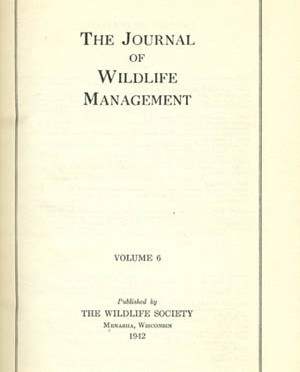It has been supposed that lack of adequate spawning areas would prevent salmonids from reproducing sufficiently to maintain themselves. Hobbs (1940) observed New Zealand trout to spawn successfully on areas other than on loose, clean gravel, namely gravel admixed with finer materials and to some extent consolidated. There are no fine gravel beds in Crater Lake where most of the shores are underwater cliffs with only occasional submerged underwater “talus slopes” of angular stones 1/2 inch in diameter or larger. Shortage of what man calls “appropriate spawning grounds” has not prevented natural reproduction.
The fact that both species of salmonids are reproducing in the lake offers a problem of fish management previously supposed to be non-existent. Our data indicate that variations in the population can not be ascribed to stocking. Certainly the numbers of both species stocked in the past, are such that the volume of planting has not been injurious to growth of the population. From the growth rate it is apparent that population pressure could be increased without retarding growth materially.
In the past, two experiments have been tried. First, the stocking of small numbers (a maximum since 1932 of 26 per acre) and second, no stocking whatever. The planting of tagged fingerlings would yield interesting information on migration, both vertical and lateral, and on survival.
Serious thought should be given to the desirability of planting large numbers of fishes in a lake inaccessible to motor vehicles. If it be assumed that there is no natural reproduction and that all fishes in the creel originated from stocking, we estimate that every fish an angler catches, cost the government approximately 83 cents. This would mean that about only 0.008 per cent of the fishes planted got into the fishermen’s creels. It is not known, however, how much the stocking has helped to keep up the population in the years when there has been heavy mortality from natural causes. R. R. Huestis (in manuscript, 1939) has recorded an epizootic of Saprolegnia that killed many fishes. Apparently this disease has been a factor for a long period, as Diller in his letter of 1901, mentioned “white patches” on the salmon. It would not be advisable to eliminate stocking entirely, because natural mortality may be so large as to necessitate periodic restoration.
Summary
1. Natural reproduction of both silver salmon and rainbow trout in Crater Lake has been proved by the scale method. The strong 1934 year-class of trout originated from a natural hatch and it constituted 42.4 per cent of all captures over a 4-year period. No salmon were planted in 1939 but that year-class of salmon constituted 76.5 per cent of the 1940 captures.
2. Fishing was more successful from 3:00 p.m. until dusk than earlier in the day.
3. More fishes were caught in July than in August each year.
4. The proportions of the various foods in the diet of Salmonids apparently depends upon their availability.
5. In general, good growth was correlated with a strong year-class in both species. There was no evidence that the present population density is injurious to good growth.
Literature Cited
Alm, Gunnar
1939. Undersokningar ovar tillvaxt m. m. hos olika laxoringformer. Meddel. Statens unders. och forsokanst. f. sotvattensfisket, No. 14, 91 pp.
Brode, J. Stanley
1938. Denizens of Crater Lake. Northwest Science, 12(3): 50-57.
Cooper, Gerald P.
1940. A biological survey of the Rangeley Lakes with special reference to the trout and salmon. Maine Dept. of Inland Fisheries and Game, Fish Survey Report No. 3, p. 182.
Hasler, Arthur D.
1938. Fish biology and limnology of Crater Lake, Oregon. Journal of Wildlife Management, 2: 94-103.
Hile, Ralph
1936. Age and growth of the cisco Leucichthys artedi (Le Sueur), in the lakes of the northeastern highlands of Wisconsin. U. S. Bur. Fisheries Bul., 48: 211-314.
1941. Age and growth of the Rock Bass, Ambloplites rupestris (Rafinesque), in Nebish Lake, Wisconsin. Wis. Acad. Sci. Arts & Letters, Proc. 33: 189-337.
Hobbs, Derisley F.
1940. Natural reproduction of trout in New Zealand and its relation to density of populations. New Zealand Marine Dept. Fisheries Bul., 8: 1-93.
Ricker, W. E.
1938. “Residual” and kokanee salmon in Cultus Lake. Canadian Fisheries Research Board, Journ. 4: 192-218.
Schindler, Otto
1940. Die Saiblinge des Konigsees. Int. Rev. d. ges. Hydrobiol., 39: 600 ff.
Wingfield, C. A.
1940. The effect of certain environmental factors on the growth of brown trout (Salmo trutta L.). Journ. Exp. Biol., 17: 435-448.
Arthur D. Hasler
D. S. Farner
Dept. of Zoology
University of Wisconsin
Madison, Wisconsin
citation: The Journal of Wildlife Management, Vol. 6, The Wildlife Society, Menasha, Wisconsin, 1942
Other pages in this section


